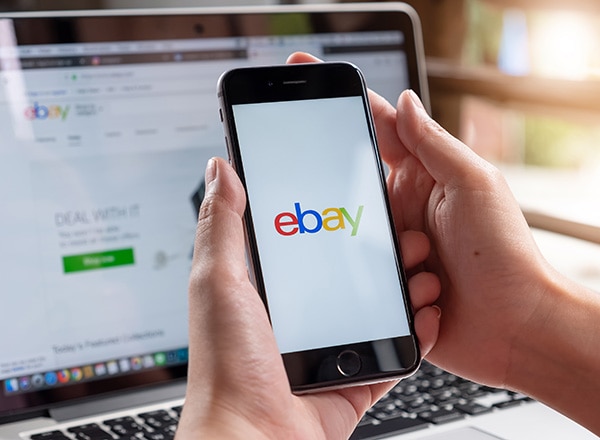Before pricing your items, create a system with different prices and listing categories for auction-style and fixed-price listings. We’ll go over the two in detail to help you make the right choice for your business.
- Auction-style listings: This form of selling is how eBay got its start and became the e-commerce marketplace it is today. Auction-style listings will typically stay up on the platform for a certain number of days, ranging from one, three, five, seven, or ten days. The timeframe you choose depends on the item you’re selling. If you’re selling concert tickets to a sold-out show, for example, you would use the one-day auction option since you need to sell quickly.
- Fixed-price listings: As the name suggests, these listings have a fixed price regardless of the item. Active buyers can “Buy it Now” without having to guess about the amount they’re going to pay. Unlike auction-style pricing, you can also bundle multiple products under one price by using a fixed-price listing. You also have the option of having buyers select “Best Offer,” allowing them to negotiate with you on the price.
But how do you know if auction-style or fixed-price listings are right for your products? Here are a few of the benefits of each selling method:
Auction-style listings can be beneficial if:
- You’re selling an in-demand item that can garner more than its retail value, such as limited-edition figures, luxury watches, or other rare collectibles.
- The value of your products fluctuates.
- You’re able to target your perfect buyer.
- You have dead inventory that’s not moving and you need to get rid of it.
Benefits of fixed-price listings:
- Sell products for a consistent amount each time.
- Your payment comes in much faster.
- Buyers tend to favor quick sales (with the “Buy Now” button) over auction-style deals.
- Bundled products stand out from a la carte items.
If you’re having a difficult time pricing your items, you can view similar listings on eBay to help you gauge the ideal price. This will also allow you to see whether people are bidding on these products or purchasing them at a fixed price. Your prices should be competitive, but not too low that you don’t make a profit. On the other hand, they shouldn’t be too high either. If your prices are significantly higher than your competitors, consumers may not want to make a purchase.














